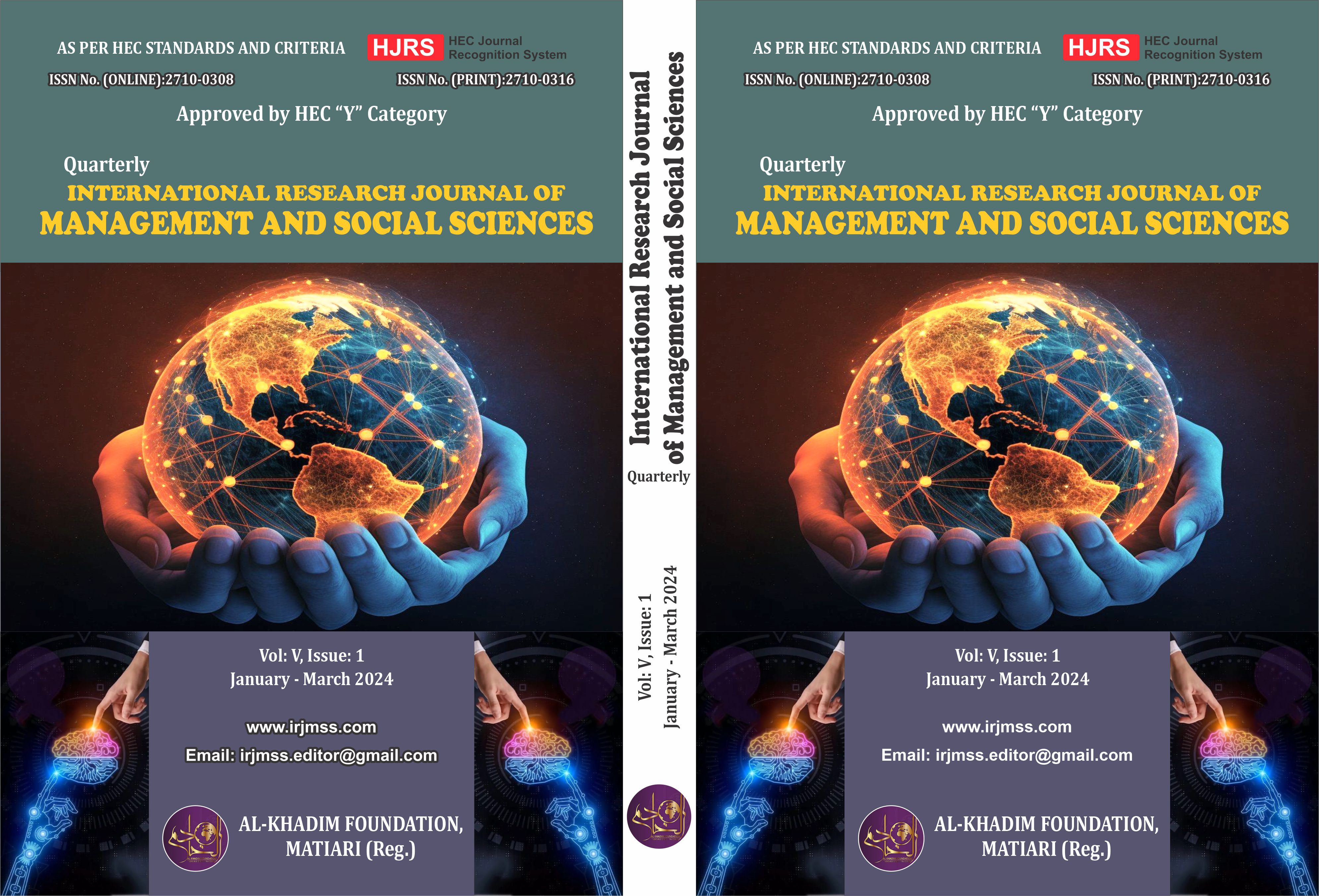An Investigation of The Impact of Teaching Quality of Science Subject on Students Learning
Keywords:
Teachers, Students, Teaching Quality, Science Subject, Students` LearningAbstract
This paper presents an investigation of teaching quality of science subject and its impact on students` learning. The reason behind selecting the problem was to investigate the impact of teaching quality of science subject on students` learning. It was also intended to describe the quality teaching of science subject and students` learning. It was thought that scientific literacy should be a top priority for all citizens since it would enable them to be curious about and aware of their surroundings, to value and critically evaluate claims made by others regarding scientific subjects, to recognize questions, to look into and draw conclusions based on evidence, and to make decisions regarding their own health and well-being as well as the environment. based on scholarly publications and information from both domestic and foreign sources. Teachers and students provided the data, and an idealized picture of the curriculum, teaching and learning techniques, career paths and teacher professionalism, facilities and resources, and the importance of science and science education to the community were painted. The investigation was conducted using a quantitative technique and a descriptive study design. To get the data, a random sampling procedure was applied. The Likert scale 5.0 questionnaire was the instrument utilized to conduct the study. The statistical program for social sciences, version 26, was used to analyze the data. It aided in obtaining improved outcomes based on information gathered from several responders. It was revealed that the teaching quality of science subject has a significant impact on students` learning. Better the teaching techniques better the students` learning outcomes can be availed.
References
Araújo, L., Saltelli, A. & Schnepf, S. V. (2017). Do PISA data justify PISA-based education policy? International Journal of Comparative Education and Development, 19(1), 20–34. DOI: 10.1108/IJCED12-2016-0023.
Barber, N. (2006). Is the effect of national wealth on academic achievement mediated by mass media and computers? Cross-Cultural Research, 40, 130–151.
Costa, P. & Araújo, L, (2018), Quality of Teaching and Learning in Science, EUR 28865 EN, Publications Office of the European Union, Luxembourg, 2018, ISBN 978-92-79-76294-9, doi:10.2760/860512, JRC109064.
Costa, P. & Araújo, L. (2015). Teaching practices in secondary schools in the EU. In Teaching Practices in Primary and Secondary Schools in Europe: Insights from large-scale assessments in education (JRC Scientific and Technical Reports). Luxembourg: Publications Office of the European Union. DOI: 10.2788/383588.
Creemers, B. P., Kyriakides, L. & Antoniou, P. (2013). A dynamic approach to school improvement: main features and impact. School Leadership & Management, 33(2), 114–132.
Flick, L. B. & Lederman, N. G. (2004). Scientific Inquiry and the Nature of Science: Implications for teaching, learning, and teacher education. Science & Technology Education Library 25. Dordrecht: Kluwer Academic Press.
Furtak, E. M., Seidel, T., Iverson, H. & Briggs, D. C. (2012). Experimental and quasi-experimental studies of inquiry-based science teaching: a meta-analysis. Review of Educational Research, 82(3), 300–329.
Gee, K. A., & Wong, K. K. (2012). A cross national examination of inquiry and its relationship to student performance in science: Evidence from the Program for International Student Assessment (PISA) 2006. International Journal of Educational Research, 53, 303-318. Goldstein, H. (2003). Multilevel Statistical Models (3rd ed.). London: Edward Arnold.
Jiang, F. & McComas, W. (2015). The effects of inquiry teaching on student science achievement and attitudes: evidence from propensity score analysis of PISA data. International Journal of Science Education, 37, 554–576.
Mayhill, D. M.-H., & Brackley, M. (2022). Making connections: Teaching methods, Teachers’ use of children’s prior knowledge in whole classroom discourse. British Journal of educational Studies, 52, 263-275.
Miles, M. B., & Huberman, A. M. (2020). Qualitative data analysis: A sourcebook of new methods. Newbury Park, CA: SAGE.
Monette. (2002). Pilot Testing and Sampling. Applied Social Research, 1(3), 1–8.
Mursaleen, G. (2012). Teachers alternate conception about the concept of physical change in terms of particle nature of matter (Unpublished master’s thesis). Institute for Educational Development, Aga Khan University, Karachi, Pakistan.
Nakhleh, M. B. (2021). Students’ models of matter in the context of acid-base chemistry. Journal of Chemical Education, 71, 495- 499.
Osborne, J., Simon, S., & Collins, S. (2021). Attitude towards science. A review of the literature and its implications. Journal of Research in Science Teaching, 25, 1049-1079.
Othman, J., Treagust, D. F., & Chandrasegaran, A. L. (2018). An investigation into the relationship between students’ conceptions of the particulate nature of matter and their understanding of chemical bonding. International Journal of Science Education, 30, 1531-1550.
Perkins, D. (2019). Teaching for understanding: American educator. Professional Journal of the American Federation of Teacher, 17(3), 28-35.
Pinarbasi, T., & Canpolat, N. (2003). Students’ understanding of solution chemistry concepts. Journal of Chemical Education, 80, 1328-1332.
Praviolo, A. (2021). Assessing students’ conceptual understanding of solubility equilibrium. Journal of Chemical Education, 78, 629-631.
Rogoff, B. (2016). Conceiving the relationship of the social world and the individual. In J. Gilbert (Ed.), Science education: Major themes in education (pp. 38-60). London, England: Routledge.
Rutledge. Ebenezer, J. V., & Erickson, G. L. (2013). Chemistry students’ conceptions of solubility: A phenomenography. Science Education, 80, 181-201.
Schwerdt, G. & Wuppermann, A. C. (2011). Is traditional teaching really all that bad? A within-student between-subject approach. Economics of Education Review, 30(2), 365–379.
Taber, K. S. (2017). Student understanding of ionic bonding: Molecular versus electrostatic thinking? School Science Review, 78, 85-95.
Tahir, M., & Treagust, D. F. (2022). Teacher training reform in Indonesian secondary science. Journal of Research in Science Teaching, 36, 357-371.
Valente, M., Fonseca, J. & Conboy, (2011). Inquiry science teaching in Portugal and some other countries as measured by PISA 2006. Procedia – Social and Behavioral Sciences, 12, 255–226.






